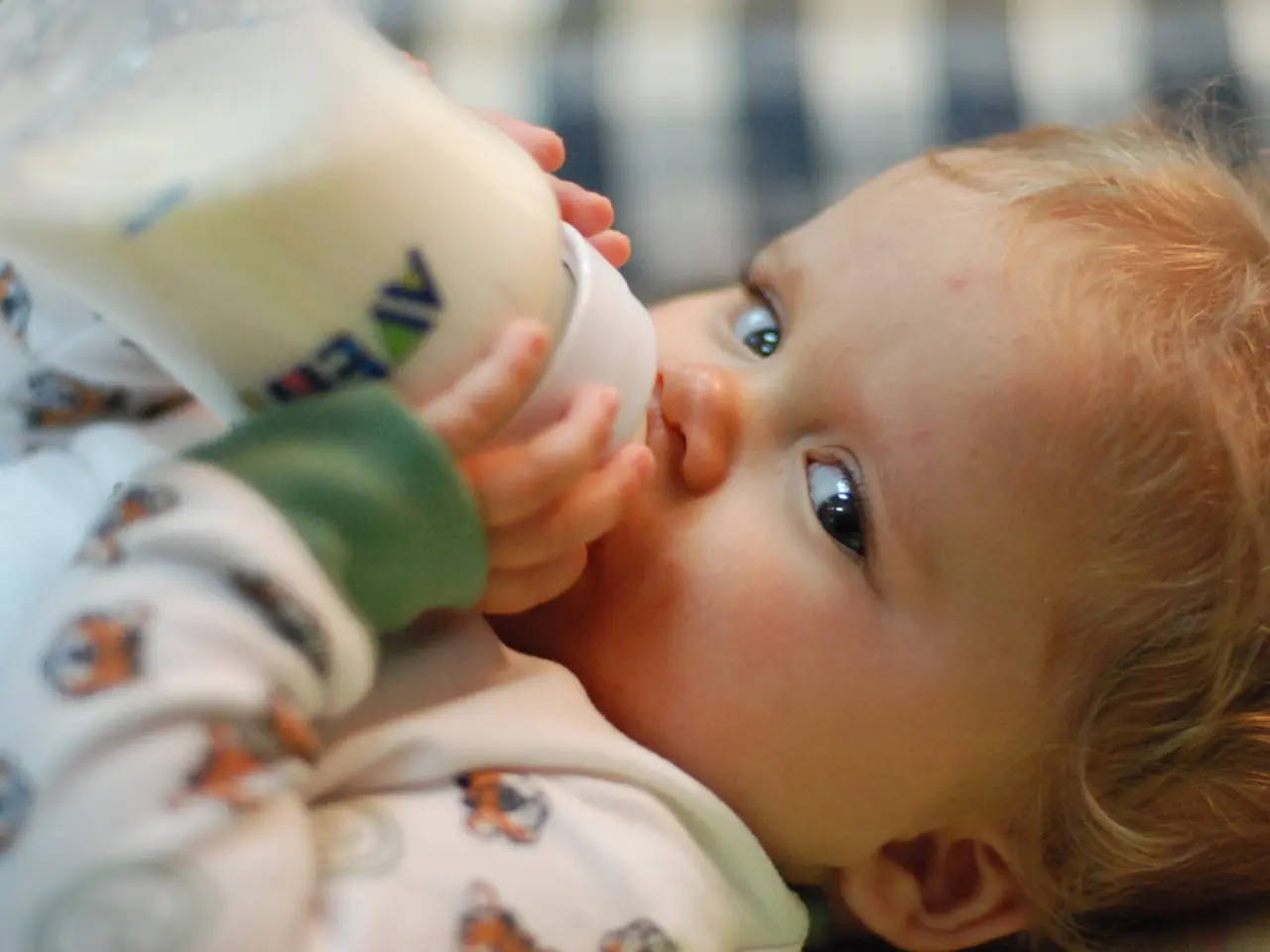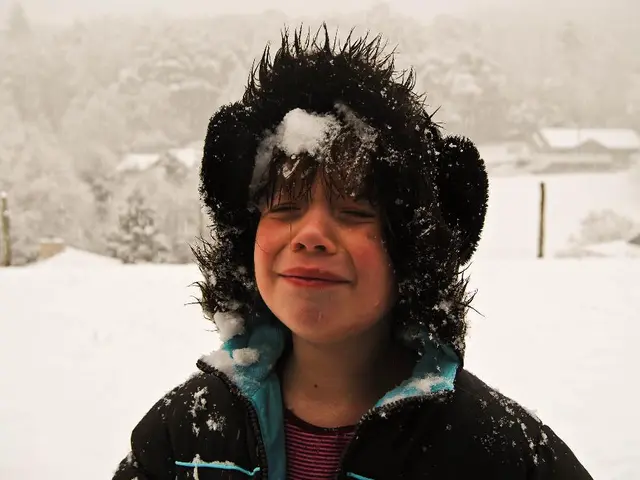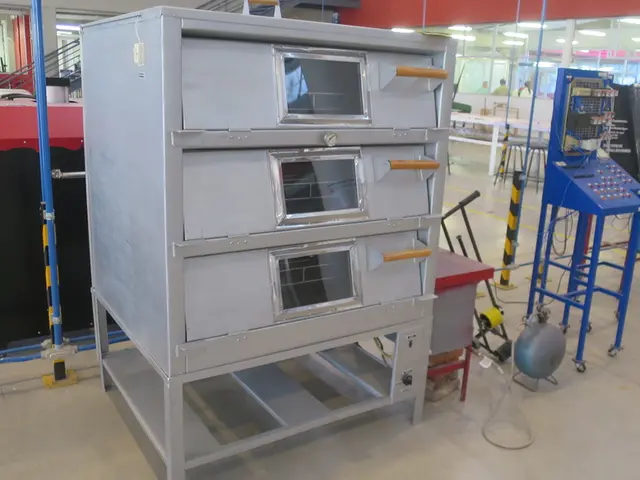Babies and Autism: Recognizing Symptoms, Diagnosis, and Following Up
In the first few months of a baby's life, signs of Autism Spectrum Disorder (ASD) may start to appear. While ASD usually develops before a person is, it can also develop outside of this age range. Here are some key indicators that parents and caregivers should look out for in their babies.
Between 0 and 3 months, some developmental differences that may indicate ASD include difficulty tracking moving objects with their eyes, over-sensitivity to loud sounds, fewer facial expressions than typical, such as less smiling or emotional expression, and difficulty recognizing or responding to new faces.
As the baby grows older, more specific signs may become apparent. By 4 to 7 months, a baby may show lack of eye contact, limited babbling, reduced interest in sounds, and minimal gesturing such as waving.
By 12 months old, a baby should be attempting to say one or two words besides the words they use for their caregiver, such as "mama" or "dada." If a 12-month-old infant is not showing these signs, caregivers should consider talking with a doctor about developmental delay screenings.
Additional signs that may indicate ASD in a 12-month-old infant include not responding to their name, not following simple instructions when prompted with gestures, and not gesturing, such as waving, pointing, or shaking their head.
By 18 months old, a child may be losing skills that they previously had or may not be pointing to show things to others, copying their caregivers' actions, or climbing on and off a couch without help.
It is important to note that these signs are not definitive indicators of ASD, and every child develops at their own pace. However, if a caregiver observes any of these signs in their baby, they should talk with a doctor to discuss their concerns and seek professional advice.
The American Academy of Pediatrics recommends that babies have a routine development assessment at all visits and developmental delay screenings when they are 9, 18, and 24 or 30 months old. The Centers for Disease Control and Prevention (CDC) notes that a baby can show signs of ASD at 2 months old, and offers resources to track a baby's development. The CDC also recommends the use of their Milestone Tracker, which includes a checklist, tips, and advice.
The Autism Science Foundation suggests that caregivers should talk with a doctor if their 2-month-old infant is not looking at their caregiver's face, observing objects and people near them, smiling when they are smiled at or talked to, exploring their body by touching and mouthing, moving both arms and both legs, or not doing these things by 4 months old.
It is important to remember that every child is unique, and developmental differences do not always indicate ASD. However, observing these behaviors can prompt parents and medical professionals to monitor development closely and possibly intervene earlier.
"Stimming" is a typical part of development and can include repetitive movements like flapping hands, rocking back and forth, or sucking thumbs. If a child exhibits excessive or persistent stimming, it may be a sign of ASD, but it is important to consult a doctor for a proper diagnosis.
In conclusion, the earliest observable signs of autism in infants as young as 2 months old primarily involve visual tracking difficulties, heightened sensitivity to sound, and reduced facial expressivity, signaling atypical social and sensory development patterns. By being aware of these signs and seeking professional advice when necessary, parents and caregivers can support their child's development and ensure they receive the care they need.
- A baby's developmental differences in the initial months might indicate Autism Spectrum Disorder (ASD), a condition that can develop even outside the first few months of life.
- Difficulty tracking moving objects with the eyes could be a sign of ASD in babies between 0 to 3 months.
- Over-sensitivity to loud sounds might indicate ASD in babies within the same age range.
- Fewer facial expressions than typical, such as less smiling or emotional expression, could be an early sign of ASD.
- Difficulty recognizing or responding to new faces might indicate ASD in babies between 0 to 3 months.
- Lack of eye contact might be a sign of ASD in babies between 4 to 7 months.
- Limited babbling might indicate ASD in babies between 4 to 7 months.
- Reduced interest in sounds might indicate ASD in babies between 4 to 7 months.
- Minimal gesturing such as waving might indicate ASD in babies between 4 to 7 months.
- By 12 months old, a baby should be attempting to say one or two words besides the words they use for their caregiver.
- If a 12-month-old infant is not showing these signs, caregivers should consider talking with a doctor about developmental delay screenings.
- Not responding to their name might indicate ASD in a 12-month-old infant.
- Not following simple instructions when prompted with gestures might indicate ASD in a 12-month-old infant.
- Not gesturing, such as waving, pointing, or shaking their head might indicate ASD in a 12-month-old infant.
- By 18 months old, a child may be losing skills that they previously had.
- A child may not be pointing to show things to others at 18 months old.
- A child may not be copying their caregivers' actions at 18 months old.
- A child may not be climbing on and off a couch without help at 18 months old.
- Every child develops at their own pace, and these signs are not definitive indicators of ASD.
- If a caregiver observes any of these signs in their baby, they should talk with a doctor to discuss their concerns and seek professional advice.
- The American Academy of Pediatrics recommends routine development assessments at all visits and developmental delay screenings at 9, 18, and 24 or 30 months old.
- The Centers for Disease Control and Prevention (CDC) notes that a baby can show signs of ASD at 2 months old and offers resources to track a baby's development.
- The CDC also recommends the use of their Milestone Tracker, which includes a checklist, tips, and advice.
- The Autism Science Foundation suggests talking with a doctor if a 2-month-old infant is not looking at their caregiver's face.
- The Autism Science Foundation also suggests talking with a doctor if a 2-month-old infant is not observing objects and people near them.
- If a child exhibits excessive or persistent stimming, it may be a sign of ASD, and it is important to consult a doctor for a proper diagnosis.




